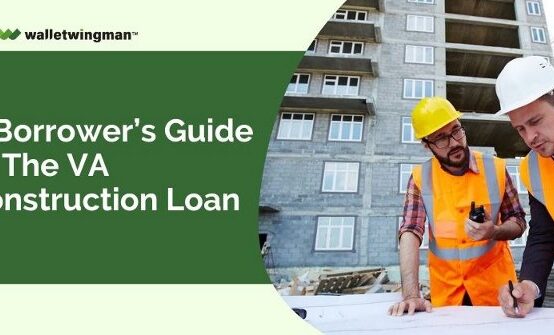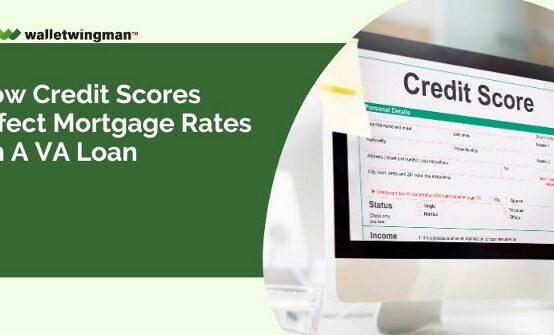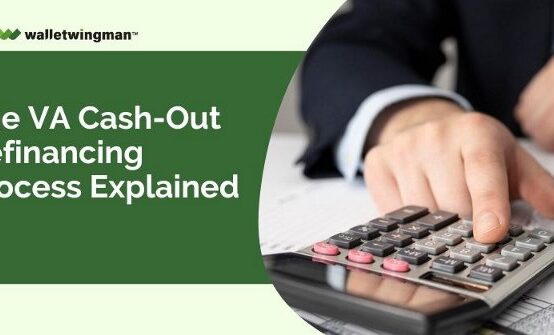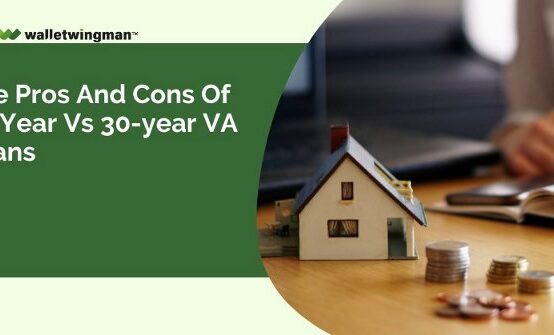The mortgage payment is one of the most important aspects of a VA home loan. After all, it affects everything from your monthly budget to your overall quality of life.
This guide will teach you everything you need to know about the monthly mortgage payments associated with a VA loan, including the four primary components.
Overview of the VA Loan Program

A “VA loan” is a mortgage loan supported by the federal government through the Department of Veterans Affairs. The VA does not lend money directly to borrowers. It simply guarantees the mortgage lenders who offer loans through this program.
In short, if a homeowner with a VA loan stops making monthly payments, the VA will compensate the lender for some of their losses.
This program is limited to U.S. military members, veterans, and certain qualifying spouses. It offers significant benefits, like buying a house with no down payment.
The VA appraisal ensures that the property meets the minimum standards set by the VA for health and safety, protecting both the borrower and the lender.
What is VA Appraisal?
VA appraisal is a vital part of processing VA loans. It is a detailed appraisal of the property that the VA-authorized appraiser makes. The primary goal of the VA appraiser is to make sure that the property meets the minimal requirements imposed by the Department of Veterans Affairs in terms of health, safety, and structural integrity.
Through appraisal, the VA-certified appraiser examines different property factors such as overall condition, structural soundness, security features, and compliance with local building codes. They also determine the property’s value using other factors, including location, size, condition, and current prices of similar properties in the neighborhood.
The VA appraisal has multiple functions. First, it protects the interests of both the borrower and the lender by making sure that the property’s value is in line with the loan amount. It also ensures that people buy properties in good shape or not overpriced to minimize the risk of foreclosure and loss of value.
The Primary Components of a Mortgage Payment

In a typical home-buying and homeownership scenario, the monthly payments for a VA loan will include four main components. Banks and mortgage lenders often use the acronym “PITI” to describe these components.
Here’s what those four letters stand for:
- Principal: The principal is the initial money borrowed from a lender to purchase a home. It represents the total VA loan amount you agree to repay over time. Each VA mortgage loan payment includes a portion of the principal, which reduces the outstanding VA loan balance.
- Insurance: In the context of VA loan payments, the second “I” in PITI stands for insurance. This is the homeowner’s insurance policy that protects the home and its contents against damage or loss. To protect their investment, VA loan lenders usually require homeowners to maintain adequate coverage throughout the life of the loan.
- Taxes: This refers to property taxes assessed by local governments on the value of the property. Homeowners are required to pay property taxes annually or semi-annually. Lenders and loan servicers often collect some of these taxes as part of the monthly mortgage payment to ensure they are paid on time.
- Interest: Interest is the price of taking money from a lender, expressed as a percentage of the principal loan amount. It’s the compensation that lenders receive for providing funds to borrowers. On a VA loan, a portion of each mortgage payment pays the accrued interest.
*Note: With a conventional mortgage loan that’s not backed by the government, the “I” for insurance can also include private mortgage insurance. But with a VA-guaranteed home loan, mortgage insurance is not required. So in this case, the second “I” in the PITI acronym usually only consists of homeowners insurance.
VA Loan Mortgage Calculator: Your Tool for Financial Planning
Finding your way through the intricacies of a VA loan is not easy, but the VA loan mortgage calculator acts as a beacon of light amidst the financial fog. This priceless tool empowers potential home buyers, especially veterans and active military members, to accurately estimate their monthly mortgage payments.
With only a few clicks, a VA home loan mortgage calculator reveals essential insights, highlighting the effect of different factors on monthly payments. It allows homebuyers to make knowledgeable choices, thus protecting their financial health throughout the home purchasing process.
Furthermore, the tool is useful not only for those facing the strict VA loan qualification credit score limits but also for those looking to better understand how credit scores are linked to mortgage conditions.
Principal, Interest, and Amortization

Amortization is another crucial concept to understand regarding monthly payments for VA loans.
“Amortization” is gradually paying off a loan through regular payments over a predetermined period. With each mortgage payment, a portion goes towards reducing the loan balance or principal, while the remainder covers the accrued interest.
At the start of your VA loan repayment term, most of your payment will go toward interest. But over time, as you pay the loan, more of your payment will go toward the principal balance.
You can see how this works by referring to your amortization schedule. This schedule shows how each monthly payment is allocated between principal and interest over the life of the loan.
Moreover, it’s imperative to note that the VA funding fee, a one-time payment associated with most VA loans, is not factored into the amortization schedule. Instead, it is typically paid upfront or rolled into the loan amount, impacting the total loan balance and the subsequent amortization process.
How and Where to Submit Your Payments
With a VA loan, the homeowner typically sends the monthly payments to a loan servicer. This might be an entirely separate company from the mortgage lender that originated the loan.
In a typical VA loan scenario, the servicer receives the monthly mortgage payments and applies them to the principal, interest, taxes, and insurance (if held in escrow). They also serve as your primary point of contact for questions about your loan, payment history, payoff amounts, and other general inquiries.
Utilizing tools such as the VA mortgage calculator can assist borrowers in gaining a deeper understanding of how their payments are allocated and planning accordingly. Additionally, regular communication with the servicer ensures that borrowers are well-informed about their loan status and any relevant updates.
How you submit your monthly VA loan payments will depend on your agreement with your mortgage lender. The most common methods of payment include:
- Online Payments: Homeowners can often make mortgage payments conveniently through the lender’s website or a designated online payment portal. This method allows for secure and efficient payment processing.
- Automatic Withdrawal: Many homeowners with VA loans opt for automatic withdrawal, where the mortgage payment is automatically debited from their account on a specified date each month. In addition to being more convenient, this method guarantees timely payments and reduces the risk of missing a payment.
- Mail-in Payments: Homeowners with VA loans can also send payments by traditional mail, typically using a check or money order. Payments are mailed to the address provided by the loan servicer and must be received by the due date to avoid late fees.
Regardless of the payment method chosen, you should submit your VA loan payments on time each month. Missing payments could result in penalties and possibly damage to your credit score.
Consequences of Missed Payments

Missing payments on your VA loan can lead to several adverse outcomes. Firstly, you may face late payment fees as stipulated in your mortgage agreement. More importantly, missed payments are reported to credit bureaus, which can significantly reduce your credit score.
A lower credit score can impact your eligibility for future loans and result in higher interest rates on loans and credit lines. Maintaining a good credit score is vital to meeting the VA loan requirements credit score and securing favorable terms for your financial future.


 A Borrower’s Guide to the VA Construction Loan
A Borrower’s Guide to the VA Construction Loan  How to Buy a Condo Unit with a VA Mortgage Loan
How to Buy a Condo Unit with a VA Mortgage Loan  How Credit Scores Affect Mortgage Rates on a VA Loan
How Credit Scores Affect Mortgage Rates on a VA Loan  How Much Can I Borrow When Using a VA Loan to Buy a House?
How Much Can I Borrow When Using a VA Loan to Buy a House?  The VA Cash-Out Refinancing Process Explained
The VA Cash-Out Refinancing Process Explained  The Pros and Cons of 15-Year vs 30-year VA loans
The Pros and Cons of 15-Year vs 30-year VA loans 